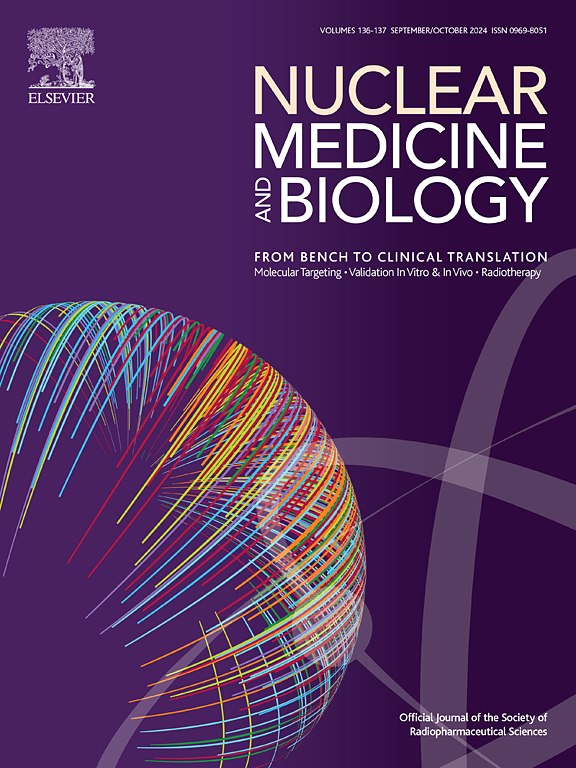Quantitative imaging using [18F]F-TZ3108 to assess metabolic-associated fatty liver disease progression and low-carbohydrate diet efficacy
IF 3.6
4区 医学
Q1 RADIOLOGY, NUCLEAR MEDICINE & MEDICAL IMAGING
引用次数: 0
Abstract
Objective
The Sigma-1 receptor (Sig-1R), located in the mitochondrion-associated membranes (MAMs), is an important biomarker for endoplasmic reticulum (ER) stress and plays a crucial role in the advancement of metabolic-associated fatty liver disease (MAFLD). Despite its significance, current methods to monitor MAFLD progression and treatment response are limited. This study aims to address this gap by utilizing [18F]F-TZ3108, an effecient tracer targeting Sig-1R, to quantitatively assess MAFLD progression and the efficacy of a low-carbohydrate diet (LCD) as a potential therapeutic intervention.
Methods
The C57 BL/6 J mice were fed either a high-fat diet (HFD) or regular diet (CTR) for 12 weeks, and the progression of MAFLD was continuously monitored at 0, 4, 8, 12 weeks via [18F]F-TZ3108 positron emission tomography/computed tomography (PET/CT) and ex vivo assessment. After confirming successful induction, LDC intervention was administered in the HFD group for 2 weeks. And relevant post-treatment evaluations were also performed.
Results
PET/CT revealed a continuous decline in the hepatic binding potential (BPND) of [18F]F-TZ3108 in mice in the HFD group during the induction period, when compared with the BPND in the CTR group. This reduction was significant after the 4th week of induction (p < 0.05). Furthermore, following intervention with LCD, there was a significant improvement in BPND (LCD vs HFD, p = 0.001).
Conclusions
The results of this study demonstrate that LCD therapy effectively mitigates MAFLD progression. Furthermore, the use of PET imaging with [18F]F-TZ3108 provides a reliable, non-invasive method for monitoring the progression and treatment response of MAFLD, offering significant potential for early detection and personalized treatment evaluation.

求助全文
约1分钟内获得全文
求助全文
来源期刊

Nuclear medicine and biology
医学-核医学
CiteScore
6.00
自引率
9.70%
发文量
479
审稿时长
51 days
期刊介绍:
Nuclear Medicine and Biology publishes original research addressing all aspects of radiopharmaceutical science: synthesis, in vitro and ex vivo studies, in vivo biodistribution by dissection or imaging, radiopharmacology, radiopharmacy, and translational clinical studies of new targeted radiotracers. The importance of the target to an unmet clinical need should be the first consideration. If the synthesis of a new radiopharmaceutical is submitted without in vitro or in vivo data, then the uniqueness of the chemistry must be emphasized.
These multidisciplinary studies should validate the mechanism of localization whether the probe is based on binding to a receptor, enzyme, tumor antigen, or another well-defined target. The studies should be aimed at evaluating how the chemical and radiopharmaceutical properties affect pharmacokinetics, pharmacodynamics, or therapeutic efficacy. Ideally, the study would address the sensitivity of the probe to changes in disease or treatment, although studies validating mechanism alone are acceptable. Radiopharmacy practice, addressing the issues of preparation, automation, quality control, dispensing, and regulations applicable to qualification and administration of radiopharmaceuticals to humans, is an important aspect of the developmental process, but only if the study has a significant impact on the field.
Contributions on the subject of therapeutic radiopharmaceuticals also are appropriate provided that the specificity of labeled compound localization and therapeutic effect have been addressed.
 求助内容:
求助内容: 应助结果提醒方式:
应助结果提醒方式:


